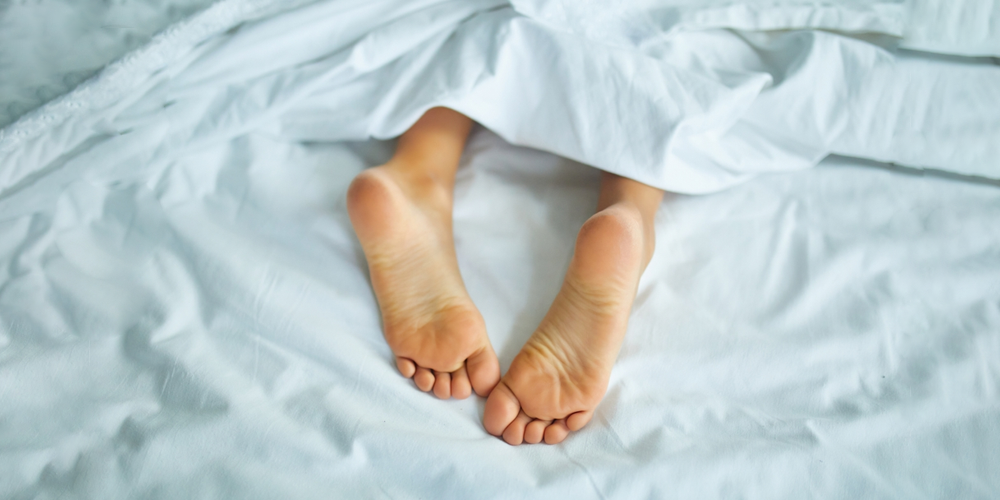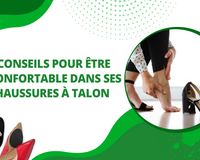Feet are the part of the body most solicited part of the body of the body. Every day, your feet bear your weight, are enclosed in sometimes inadequate footwear, and are constantly subjected to the shocks of walking. As a result, many people have foot pain or have plantar problems, and you may be in the same situation. However, there are many different types of pain, and the multitude of information you can find on the Internet can mislead you when it comes to identifying your pain. That's why this article will give you all the information you need to know about what your pain isaccording to its location and the situation in which it occurs.
Pain by location
The foot is made up of different partssuch as the heel, arch and toes. You may experience pain in a particular area of the foot, in which case you'll undoubtedly identify your plantar pain by its location below.
Pain under the middle of the foot
You may be experiencing under the middle of the footin the hollow of the foot. There are several possible reasons for arch pain. There are many different pathologies that can affect the arch of the foot. Your pain may be caused by a flat or hollow foot. These plantar pathologies are typically related to the arch of the foot, since they involve a weakness (flat foot) or tension (hollow foot) of the arch of the foot. In addition to these pathologies, you may have plantar fasciitis. Specifically, this is an inflammation of the fascia, the tissue stretched between the heel and the toes. Outside the realm of pathology, it's possible to experience pain under the midfoot as a result of fatigue of the foot.

To alleviate pathologies, we recommend the use of orthopedic insoles, which can relieve pain and correct the condition. For fatigue, you can use anti-shock insolesto reduce foot fatigue.
Pain under the forefoot
It's not uncommon to experience pain under the forefootfrom walking too much, for example. So far, nothing serious. However, there is one pathology that can be far more painful and disabling: the metatarsalgia. The metatarsals are the bones at the base of the toe joints. They are located where strong pressure is exerted when walking or standing for long periods. This pressure can cause inflammation in this area, but it is not the only cause of this pathology, which is more of a symptom. In fact, if you experience metatarsalgia pain, it may be a symptom of many other plantar pathologies, such as hallux valgus and claw or hammertoes. The Morton's neuromacauses irritation of a nerve between two metatarsal heads, and can lead to pain under the forefoot.

To treat this pain, it is advisable to use solutions adapted to the pathology in question. For hallux valgus, for example, a plantar orthosisThe same goes for a claw toe. If it's just a case of foot fatigue, we recommend the use of an anti-shock or memory insole, to reduce pressure.
Pain under the sides of the foot
Pain in the sides of the foot are many and varied. Whether on the outside, inside, front or back of the foot, each pain is different and linked to a particular problem. For example, if you have pain on the inside front side of the foot, it may be due to a hallux valgus. If you have pain along the outer side of your foot, it's more likely to be due to overuse, for example when running. However, this type of pain can also be associated with the fact that your foot is not positioned straight when you walk (bowed legs, for example). Finally, if you experience pain on the inside of your foot but in the middle, it's probably because you have the flat feet.

To treat these pains, you first need to find the right solution for your problem. For example, as we said earlier, hallux valgus is treated by wearing plantar orthoses. For pain along the outer side, you should consider consulting a specialist to correct a potential postural problem. For flat feet specialized orthotics are a good option.
Pain under the back of the foot
The heel is the first area to be impacted when walking or running, so it's not uncommon for pain to occur here. Heel pain therefore has multiple origins. The most common causes are heel spura thorn-shaped bone formation on the calcaneus, the heel bone. Speaking of the calcaneus, this can fracture, causing severe heel pain. Among other pathologies, Achilles tendonitis is not to be overlooked. Finally, excessive weight-bearing, such as on the forefoot, can lead to heel pain.

These pains can be treated in a variety of ways. For heel spurs, you'll need to use specialized orthopedic insertsFractures of the calcaneus require a cast or splint. For Achilles tendonitis, rest and restraint are all that's required, as is the case for pain caused by prolonged weight-bearing.
Pain under the toes
The toes can also cause pain. Indeed, they can be affected by pathologies such as hallux valgus (deformity of the big toe joint), although this condition causes pain on the side of the foot and not under the toes. The main types of pain under the toes include claw toeswhich, in addition to pain on the top of the joints, can cause discomfort under the tips of the toes. The mallet toes follow the same principle as claw toes, since they are more or less the same pathology. You may also experience toe pain due to a gout attack or fracture.

To treat claw and mallet toes, the best solution is to buy specialized foot orthotics. In the case of a fracture, a splint must be fitted and, of course, all sporting activity must be stopped. As for gout attacks, it's a good idea to adapt your diet and take appropriate medication for the long term.
Surface and general problems
Whatever the area under the foot, surface problems can cause severe pain. These include cracks, corns, warts or fungusas well as other infections. You may also suffer from foot pain due to problems affecting the whole body, such as osteoarthritis.
Pain depending on the situation
To help you identify what ails you, we've described which diseases are linked to pain in specific situations.
Prolonged static position
Many jobs (security guard, factory worker, etc.) require you to be in a static position for long periods of time. standing position for long hours. If you're in this situation and your foot hurts, it's probably because your weight-bearing areas are under prolonged pressure. This could be the heel, the metatarsals or, if your posture is poor, the outer edge of the foot. If you also have pain on the inside edge of the foot, you probably have flat feet.
Walking or running
It's not uncommon to walk or runHowever, pain-causing pathologies occur almost exclusively when there is intense and repeated activity. If you're a runner, a walker, or simply walk a lot, you could be suffering from a heel spur. You could even be suffering from Achilles tendonitis, not to mention the many corns and lesions that can occur underfoot.

To treat these pains, you'll need to wear special orthopedic insoles (heel spur) or simply rest your foot and stop practising sport.
Waking up or resting
Plantar fasciitis (also known as plantar aponeurosis) is typical of a foot injury. pain on waking or after sitting, as it is an inflammation. As a result, metatarsalgia can also be exacerbated after a period of rest.
For immediate relief, you could, for example, massage and stretch the area while applying cold to it. In the long term, you can use orthopedic insoles.
During the night
Aches and pains at night are symptomatic of inflammatory pathologies. Plantar fasciitis, metatarsalgia or Morton's neuroma may therefore be exacerbated as evening approaches and during the night.
To relieve these pains, we recommend the use of a natural anti-inflammatory, as standard anti-inflammatories prevent tissue healing.










